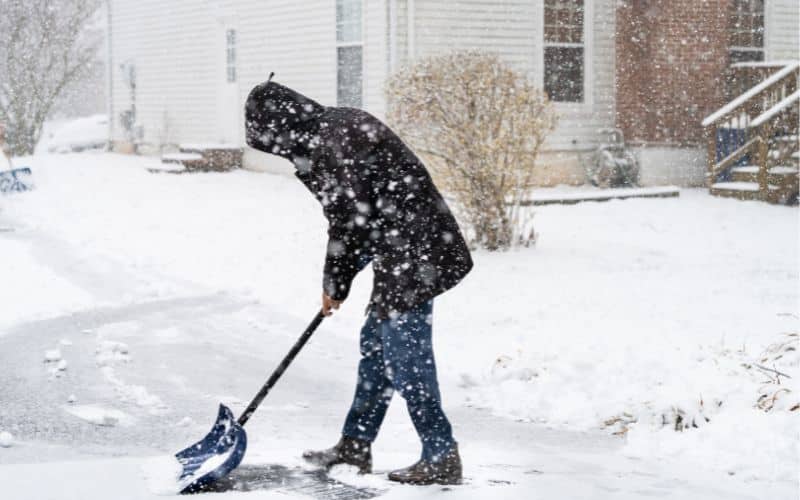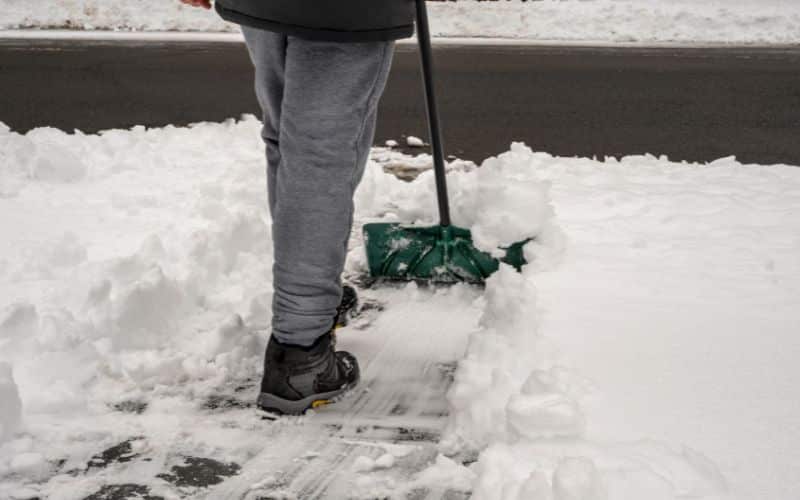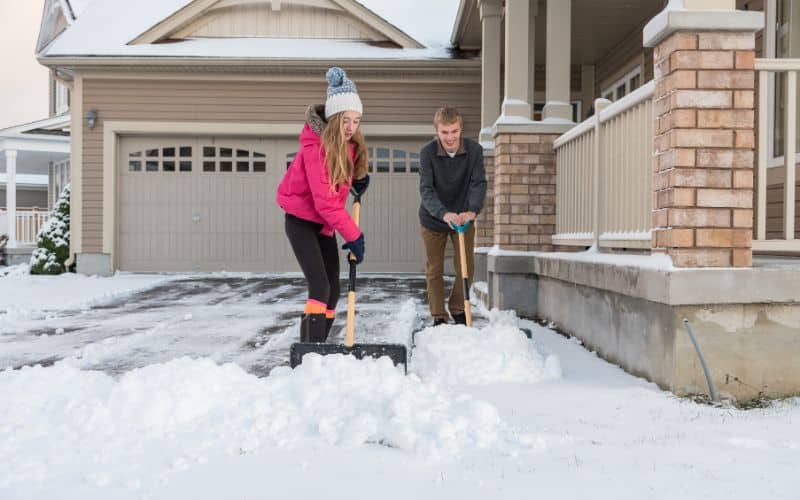
When winter hits, dealing with snow drifts on your driveway can be a real headache. These pesky mounds, formed when strong winds blow snow into piles, can make your driveway a nightmare to navigate. But don’t worry, I’m here to guide you through effective ways to prevent this snowy nuisance.
Understanding the formation of snow drifts is the first step towards prevention. By preparing your driveway for snowfall and employing techniques like snow fencing and retaining walls, you can minimise the accumulation of snow. In this article, we’ll delve into these methods, ensuring your driveway stays clear throughout the winter season.
So, ready to tackle those troublesome drifts? Let’s explore the key factors contributing to snow drifting on driveways and how you can effectively combat them. This winter, you’ll be equipped with knowledge and strategies to keep your driveway accessible, regardless of the weather.
Why Snow Drifts Occur on Driveways
Driveways, especially during winter, can become inaccessible due to the occurrence of snow drifts. To properly address this issue, it’s essential to understand why snow drifts form in the first place and the factors that play a role in their formation.
Snow Accumulation Patterns
Snow accumulation largely depends on two primary variables: wind speed and direction, and the surrounding terrain. When there’s a strong wind, it’s known to carry and deposit snow in other regions. This leads to the piling up of snow, thereby creating snow drifts. The landscape surrounding your driveway equally significantly influences where and how snow accumulates. For instance, if your driveway is situated in an open area or close to large, open spaces such as fields or mountains, it might be more vulnerable to snow drifts.
Another critical factor is the design and orientation of the driveway. Driveways with elongated, straight sections or those directly facing the prevailing winds are more susceptible to snow pile-up. Understanding these factors aids your decision-making process when considering snow drift prevention techniques.
Effects of Wind on Snow Drifts
A more in-depth factor contributing to snow drifts is the wind’s direction. Remember, driveways directly facing the prevalent wind direction are at a higher risk of snow accumulation. This wind action contributes significantly to the drifting patterns of snow on your driveway.
Additionally, the intensity and moisture content of the snowfall can impact drifting. Wet, dense snow tends to stick and pile up, forming more sizeable drifts. So, staying updated with weather reports and taking prompt actions when a heavy snowfall is forecasted is a proactive measure to curb snow drifts.

Importance of Preventing Snow Drifts on Driveways
Snow drifts can transform a winter wonderland into a laborious task of shovelling and clearing. While snow-capped landscapes present a picturesque view, the accumulation of snow drifts on driveways brings significant problems. From safety concerns to accessibility issues, preventing snow drifts is crucial.
Safety Concerns
Preventing snow drifts is not only about maintaining the aesthetic appeal of your driveway but, more importantly, ensuring safety. Snow drifts create unevenness and hidden obstacles in the driveways, significantly enhancing the risk of vehicle mishaps or pedestrian slips and falls.
Just as QRA principles guide material safety, it’s pivotal to understand how to avert driveway snow drifts. Adopting regular and proactive snow removal is a silver bullet for preventing accidents caused by snow drifts.
Accessibility Issues
Snow drifting can block driveways, posing a severe threat to your driveway’s accessibility. Needless to say, it’s challenging to access your driveway or parking when it’s buried in drifting snow, especially during heavy snowfall periods.
Early removal of snow, as soon as possible after snowfall ends or even while it’s still ongoing, lessens the likelihood of snow accumulating to form drifts. Consider it as routine maintenance to sustain the effectiveness of your snow drift prevention measures. After all, nobody wants to be stuck in their property because of an inaccessible driveway.
Tips for Preventing Snow Drifts on Driveways
Now that we understand the issues around snow drifts, let’s dive into some practical solutions. Ensuring a snow-free driveway involves several strategies, from regular snow clearance to the strategic use of barriers and heating systems.
Clearing Snow Regularly
An essential part of snow drift prevention is being proactive about keeping your driveway clear. Let’s lay out a few key points:
- Clean and Clear: Before the snow season, ensure your driveway is clean and free from any debris or obstacles that could impede snow removal or lead to snow drifts.
- Clear Walkways and Entrances: Along with your driveway, ensure to clear snow from walkways, steps, and entrances. Accumulated snow can produce hazards and hinder movement.
- Establish a Clearing Routine: Adopt a systematic approach to snow removal. Establish a consistent clearing routine to ensure your driveway stays clear throughout the winter.
Using Barriers and Curtains
Barriers and curtains disrupt wind flow, helping to keep your driveway clear. Here’s what to keep in mind:
- Snow Fencing: This popular option is designed to reduce snow drifting by trapping and redirecting the wind. Install it based on the prevailing wind direction.
- Using Temporary Barriers: If the commitment of a permanent barrier seems daunting, consider tmporary options like snow fencing or fabric, which provide quick and handy wind protection.
- Maintenance: Regular inspections are key to ensure your barriers are in optimal condition. Repair or replace any damaged parts and clear any accumulated snow.
Creating Windbreaks
Constructing windbreaks around your driveway offers an additional line of defence against drifting snow. Consider the following:
- Choosing the Right Materials: Mesh, either plastic or wire, and wood plank fences make effective windbreaks. You can also grow natural barriers using a well-thought combination of evergreens, deciduous trees, or native prairie grass.
- Inspect and Repair: Make sure to regularly inspect your windbreaks and repair any damage. Maintaining them in good condition equals greater wind redirection potency.
Installing Heating Systems
A more technologically advanced solution, heating systems can help to keep your drive clear during the cold winter months. They can be a useful addition to your snow drift prevention toolkit.
Ultimately, it’s about striking the balance between taking steps to prevent snow drifts and maintaining a natural and accessible driveway. Regular driveway preparation, maintenance and modification can help to ensure a snow drift-free winter, enhancing safety and accessibility.
Conclusion
So, there we have it. I’ve walked you through the different strategies for preventing snow drifts on your driveway. It’s all about staying on top of snow clearance, using barriers to disrupt wind flow, and considering the use of heating systems. But remember, it’s crucial to strike that balance between a drift-free driveway and one that’s still natural and accessible.
Never underestimate the power of a good snow clearing routine, or the effectiveness of a well-placed snow fence. And if you’re feeling adventurous, why not explore the benefits of a driveway heating system? But whatever you choose, make sure it works for you and your home. After all, every driveway is unique. It’s your space, so make it work for you. And here’s to a winter free of troublesome snow drifts!









